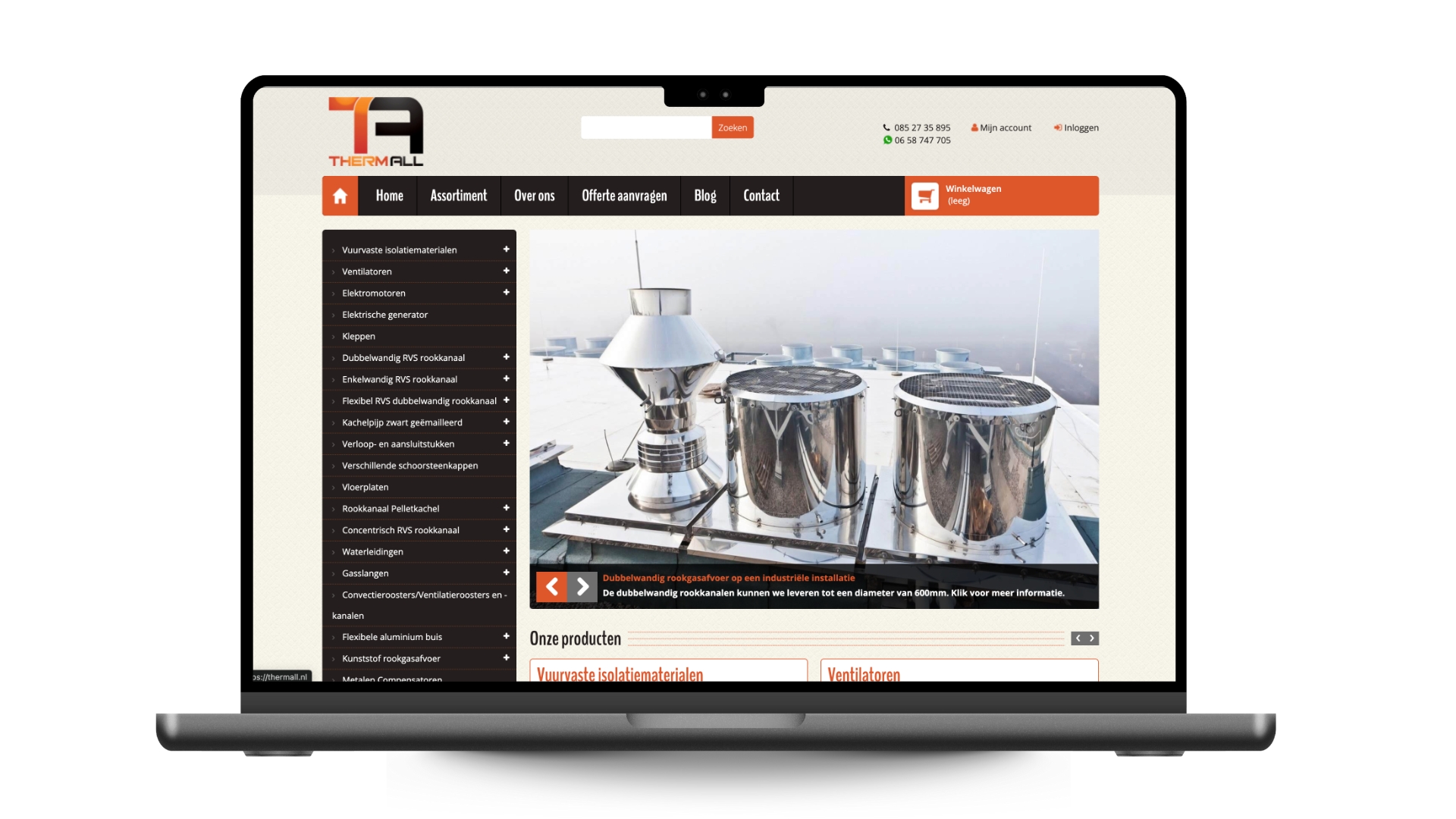
Bezoekers opgelet: deze webshop is veranderd
Thermall.nl is sinds 2014 jarenlang een vertrouwde plek voor zakelijke bestellingen van kachelmaterialen geweest. Inmiddels is de webshopfunctie uitgezet. Bestellen via deze pagina is niet meer mogelijk. Maar geen zorgen: alles is verhuisd naar een verbeterde omgeving. Voortaan kunt u ook zakelijk bestellen via kachelmaterialenshop.nl
Waarom zijn wij overgestapt naar een nieuw systeem
Om u beter van dienst te kunnen zijn. De vorige webshop draaide sinds 2014 op een verouderde software. Met de overstap naar Shopware 6 bieden wij een snellere en veiligere omgeving die geschikt is voor zowel desktop als mobiel. Producten zijn makkelijker te vinden en het bestelproces verloopt overzichtelijker en een stuk efficiënter.


Zakelijk bestellen? Dat kan via Kachelmaterialenshop.nl
Thermall verwijst voortaan door naar Kachelmaterialenshop.nl. Deze webshop is geschikt voor zowel zakelijke als particuliere klanten. U vindt hier het volledige assortiment kachelmaterialen, inclusief rookkanaal, afdichtingen en accessoires. Bestellen kan eenvoudig en snel via een moderne en gebruiksvriendelijke omgeving.
